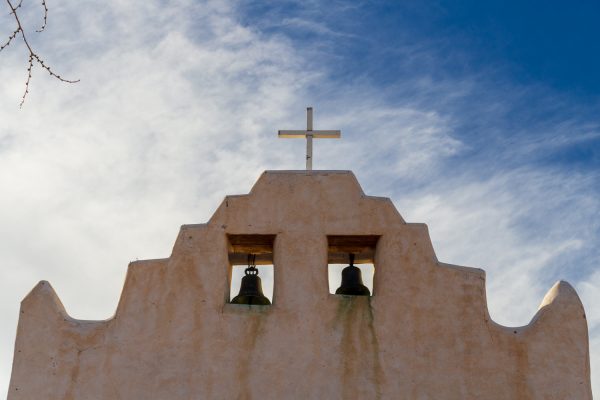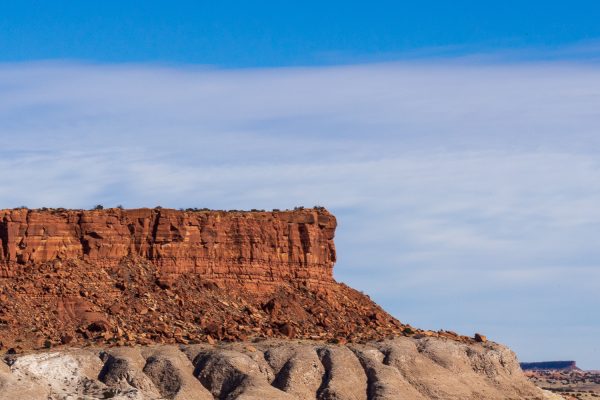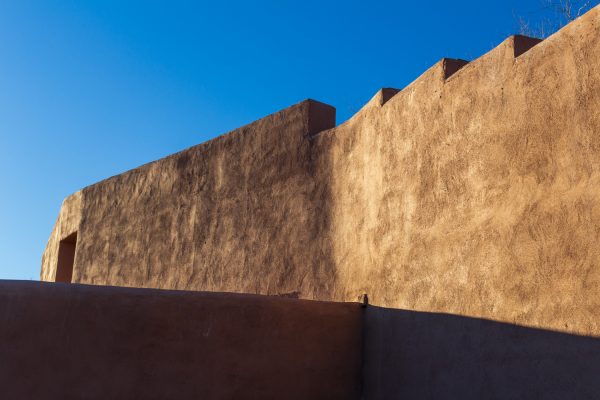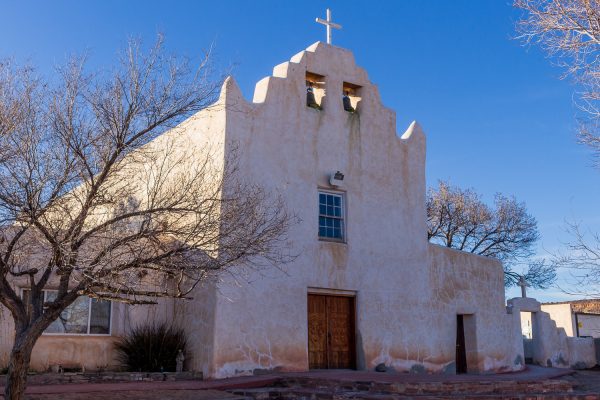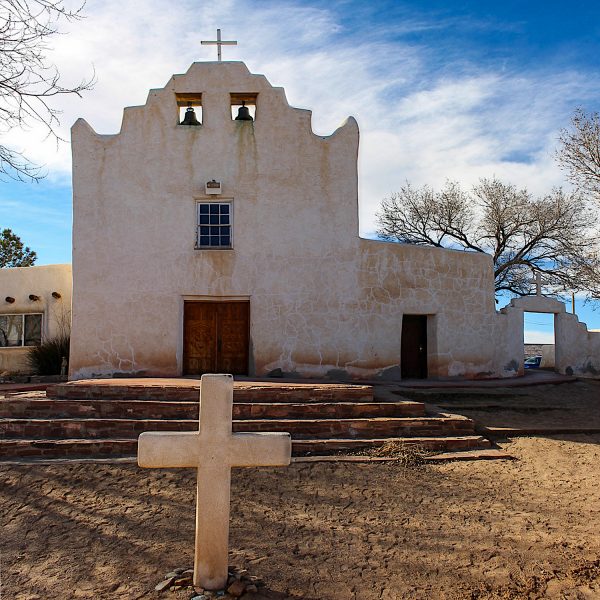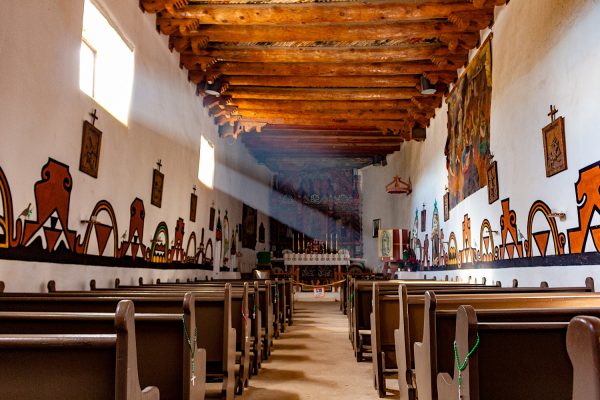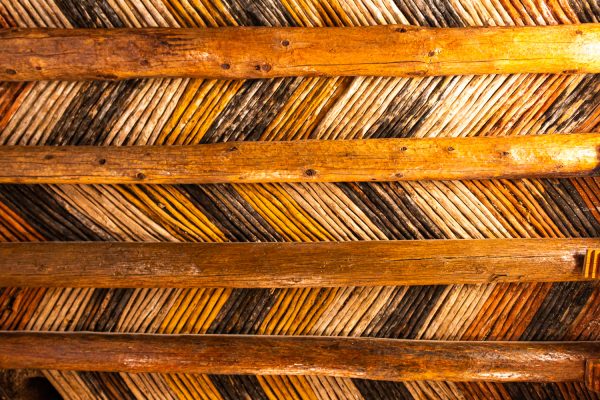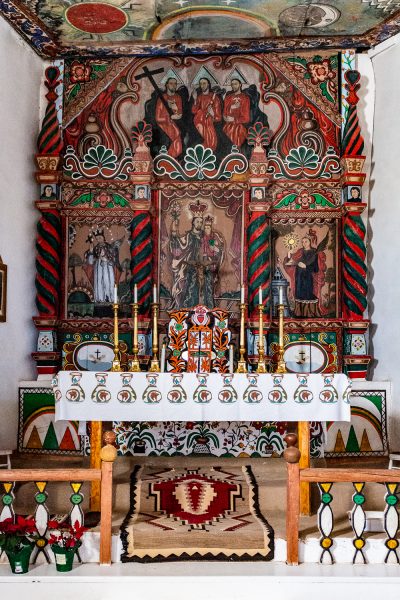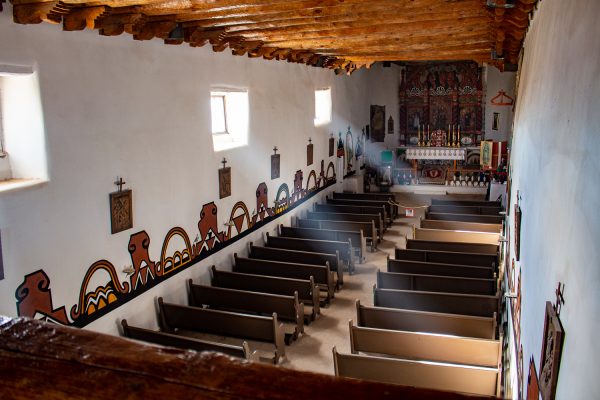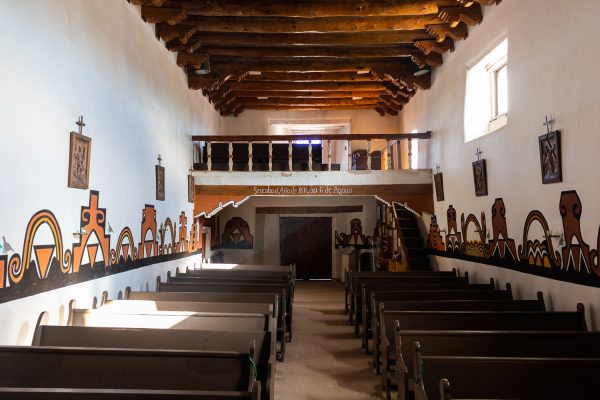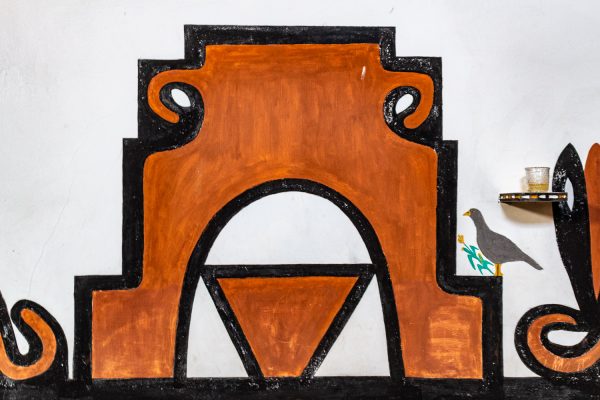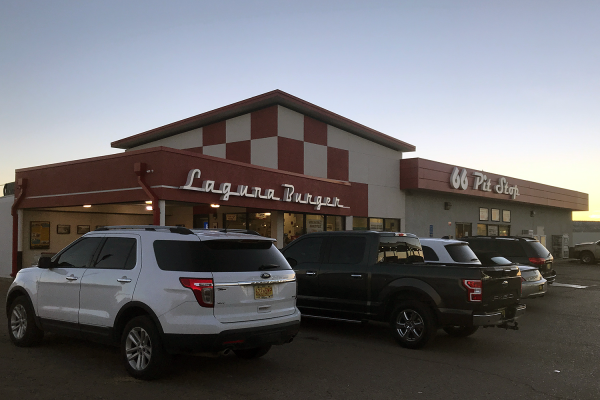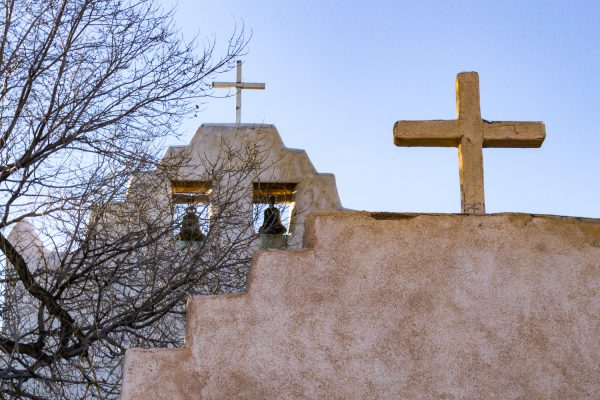Day Trip: San José de la Laguna Mission Church
by Bruce • January 27, 2020 • Roadies • 0 Comments
I had two major aspirations for 2020, besides the basic health and life stuff.
The first was to improve at writing (hopefully, by actually writing some this year). The second was to improve in my photography understanding, skills, and technique.
To improve in photography, it means I have to get out and take some pictures, so despite my hibernation inclinations today, I knew I needed to go somewhere and practice shooting something.
After thumbing through destination targets like Bandelier and El Malpais by Grants, I decided to just hop in the truck and drive west on I-40 and just stop where chance might take me, with the Malpais as a good landing place if I needed one.
Once I entered Laguna Reservation and approached the rising curve and the red mesa land near Mesita, I opted to get off the freeway and take the frontage road in Mesita to view the grand mesa by it more closely. I took my time and headed west cresting the same hill as I-40 did to my west, enjoying views of landforms to the northwest, and the snowcapped Ridgeline of Mt. Taylor in the distance.
My frontage road met the freeway exit overpass on the east edge of Laguna, and I pulled over at the school parking lot near it.
I remembered “that old church” was somewhere around here. A quiz of my phone, and I was soon driving again, onto an access road into old Laguna, the clustered hill village that featured an old Spanish mission within it. I found a narrow lane that ascended between low adobe and rock homes into the town on the hill, and was soon met with a hostile sharp turn.
I decided to roll back down the hill and park in a little lot I had passed, and I walked on footprinted paths between structures up the hill to find first the cleared quad that serves as the villages main plaza. Behind a building before me I could see the white bell wall of the mission rising, and rounding some homes, I was before the church and its walled I courtyard.
Quickly, I was in the courtyard, admiring the facade of the old white-plastered building in front of me. I had left my cameras and my cellphone in my truck, a nod at my desire to respect a message on the signs I had seen not only on the lanes on this hill of homes, but also near the freeway exit crossroads: No photography on the reservation without prior approval. I expected to just walk around the church and maybe get yelled at by a locals wondering what the gringo was doing.
My day changed instantly, though, when a smaller thin local man approached me and asked me if I’d like to see inside of it. Would I? Oh man. That would be incredible. He explained he was one of the custodians of the church who lived right across from it, and that he’d be glad to let me in.
And then he did. And then he gave me a few facts on the church’s background.
And then he said “Would you like to take some pictures?”
I am thinking of the signs I’ve seen, and the requirement for prior approval. One such sign sits on a table in the foyer.
“Are you sure? I don’t want to disrespect you are your people in any way by doing that.”
Oh no, he says. It’s okay.
Well, I left my camera in my truck- can I go get it? Sure. I’ll just be out front picking weeds down below.
I get my camera and come back and he leaves me in the church alone for 10 minutes to look at everything.
A storm of motes swirl in the sunlight beneath each window on the west wall, casting beams across the sanctuary. I absorb the peace here, and the history.
—
San Jose de la Laguna Mission was began in 1699 after pueblo members requested a Catholic priest of their own from the Spanish for their community. If the church would provide one, the people would construct the mission, they submitted. The church came through with a priest, and in 1701, the mission was completed (60 years after the San Estaban del Rey Mission Church was finished at Acoma Pueblo).
The custodian said most of the elements within the structure were still original, except for some rework done on the wall behind the altar at some point because of water damage. The facility features original items and artwork of various kinds within it: a mud floor, carved wooden plaques of the 12 Stations of the Cross, 6 on each sanctuary wall, an original tapestry on a buffalo hide on the center decorates the east wall, carved decorative corbels support the vigas at wall joints, and exposed painted latillas (laths) rest on the vigas in colorful patters, carrying the layers of dirt, latillas, and brush that comprise the roof.
The church now has a small convent, home of three nuns, and a rectory for the priest attached to the original building. It also features two outdoor shrines on its northeast corner, added at some later date- one to Saint Joseph, the church’s patron and courier of rain to the region, and a second, “Our Lady of Victory Shrine”, commemorating “all the Laguna Boys who died in World War II”.
The church is still an active center of the community. The church offers morning prayer times during the week and Sunday services. Sitting adjacent by it to the east is a long church community center which was decorated outside with a smattering of colorful balloons on the walls. Cars filled the lot by it, and people were heard mingling within it. Someone was having a birthday party in it while I was there.
—
I talked to several men during the afternoon who wandered over to meet me. One, a local artist named Alfred, shared with me a story that the church used to have a painting of St. Jospeh within the sanctuary long ago that was quite beautiful and had miracle powers, A powerful man in Laguna fell in love with a woman in Acoma, and he wanted to marry her. The Acoma knew of and desired to possess the St. Joseph painting and saw an opportunity in this romance for fortune. They told the foreign suitor, “You may wed this woman if you will bring to us the St. Jospeh picture for out church.” The man came through and married his love, and San Jose de la Laguna lost its principal holy image in the church to the mission at Acoma, where it evidently still lives, Alfred told me. “St. Steven has had our St. Joseph there as a guest in the church ever since”. I guess this remains an item of friction between people from the two communities from time to time.
Another man, kind but clearly close to alcohol, gives me a short tour around the top of the hill village, and shows me inside of his one room adobe and rock walled lodging. The floor is mud with several patches of old dirty linoleum adding style in sections. A wood stove sits by one wall, and by it a long counter that holds a microwave and an electric fryer. A full size fridge stands by the counter completing the kitchen. Opposite, a dresser and a queen size bed sit by the plastered wall. One opaque window lets a muted light into the room. A second dresser by the screen-doored entry way holds a TV and a radio, which plays country music from an Albuquerque station. Black and white photos of family members or friends are tacked high on the walls, with several religious plaques and bumper stickers. The man, single and one of eight siblings, lives alone in this plumbingless room. Down the lane outside the door is the home he was raised in, and it is where he goes for bathroom things. He tells me some about his family, and life in Laguna (he has never left it), and about local politics while we walk a bit. At the end of our loop, I thank him for his time and volunteer guidance, and he asks if I might have a few bucks I can spare. I give him all I have, three dollars, and feel bad I don’t have more, although I know what it will be spent on.
—-
Once back at the church after my walk with my guide, I take a few more external pictures as the sunlight approaches golden hour. The front of it is largely in shadow now. It’s been a great afternoon. I am so happy for the time in the church and for the experience in old Laguna.
I walk to my truck, drive back toward the freeway access road and- is that the original Laguna Burger right there?
I make one last necessary stop in Laguna before I head home from this day trip.

